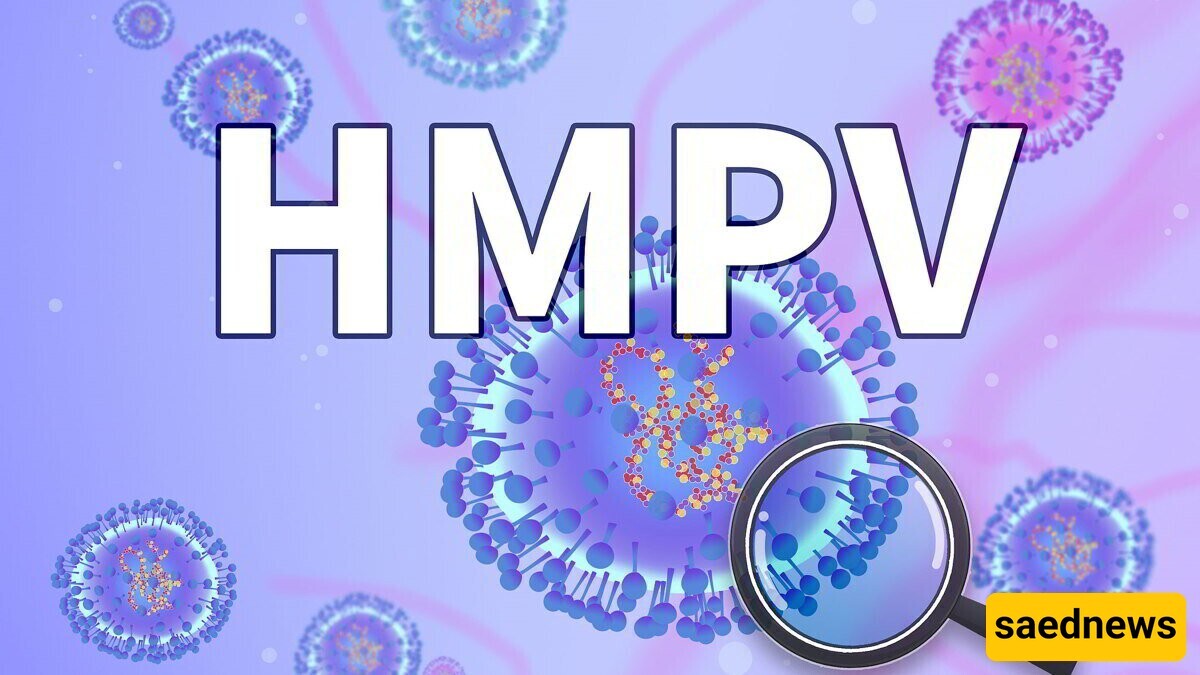Saed News: The Chinese HMPV virus is not as dangerous as COVID-19 and only presents symptoms similar to a common cold. This virus and similar ones have existed before, with the main difference being the increased prevalence of the illness during colder months.

According to Saed News Family Magazine, reports indicate a surge in respiratory infections in China caused by the HMPV virus. The spokesperson for the World Health Organization (WHO) stated that data from China shows acute respiratory infections linked to Human Metapneumovirus (HMPV) have tested positive since December 28, 2024. With increased population density and New Year celebrations, the spread of this virus is on the rise. However, it is important to note that HMPV is not as dangerous as COVID-19.
Human Metapneumovirus (HMPV) is a virus that typically causes symptoms resembling a cold or flu. It often leads to upper respiratory infections but can sometimes cause lower respiratory infections like pneumonia, asthma exacerbations, or flare-ups of chronic obstructive pulmonary disease (COPD). HMPV infections are more common in winter and early spring.

Symptoms reported among those infected include:
Cough
Fever
Runny or congested nose
Sore throat
Wheezing
Shortness of breath
Rash

HMPV spreads quickly from person to person, similar to other viruses. Common transmission methods include:
Coughing and sneezing
Shaking hands, hugging, or kissing an infected person
Touching contaminated surfaces or objects like phones, doorknobs, keyboards, or toys
HMPV is more common among infants, the elderly, immunocompromised individuals, and people with lung diseases like asthma, COPD, or emphysema. About 10–12% of respiratory illnesses in children are attributed to HMPV.
HMPV infection can lead to outbreaks. However, experts in China and India suggest there is no significant cause for concern and believe it can be controlled.
HMPV was identified in 2001, but researchers believe it has been circulating in humans for at least 60 years. Therefore, it is not a new virus.
Currently, there is no antiviral medication specifically for HMPV. Most people can manage their symptoms at home. For severe cases requiring hospitalization, treatments may include:

Oxygen therapy: Supplemental oxygen through a nasal tube or face mask
IV fluids: To maintain hydration
Corticosteroids: To reduce inflammation and alleviate symptoms
Mild cases of HMPV typically last 3–6 days. Severe cases may take longer to recover, and some symptoms, such as a persistent cough, may linger.
Medical professionals can diagnose HMPV using a soft-tipped swab to collect a sample from the nose or throat.

Potential complications include:
Bronchiolitis
Bronchitis
Pneumonia
Asthma or COPD exacerbations
Middle ear infections (otitis media)
Wash hands frequently with soap and water; if unavailable, use alcohol-based hand sanitizer.
Cover your mouth and nose with your elbow when sneezing or coughing.
Avoid close contact with others if you or they are sick.
Wear a mask if you must be around others while ill.
Avoid touching your face, eyes, nose, or mouth.
Do not share food, utensils, or drinking cups.

Seek medical attention if you have:
Respiratory infection symptoms and an underlying medical condition
Symptoms that do not improve within a few days or a fever lasting more than three days
What over-the-counter medications can I use?
How can I manage symptoms at home?
What severe symptoms should I watch for?
When should I seek emergency care?
How long might recovery take?

Reports from China about HMPV are reminiscent of the early, uncertain days of the COVID-19 pandemic. The WHO has urged China to continue sharing detailed epidemiological data. The good news is that HMPV is a known virus, and there is no cause for alarm on the scale of COVID-19.

